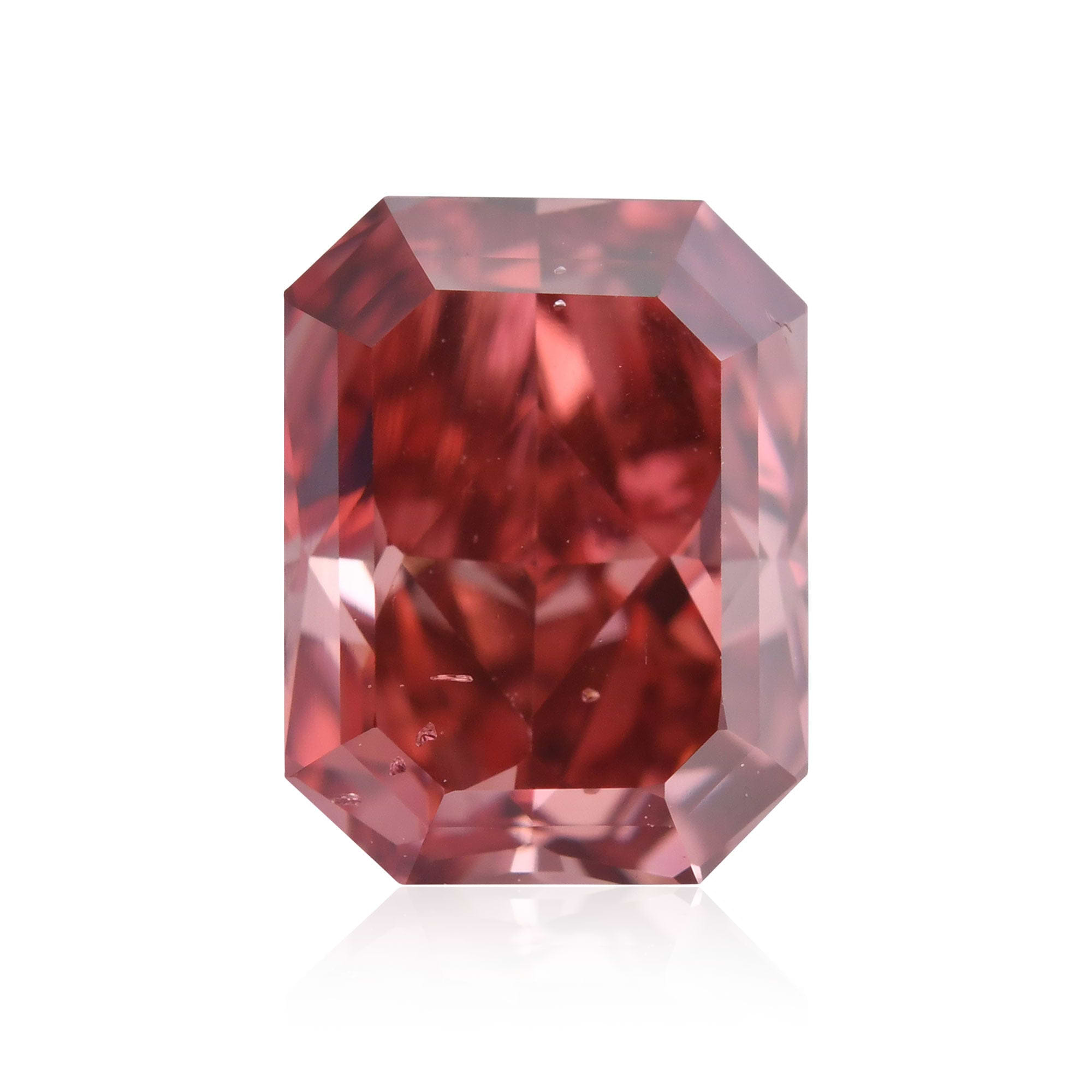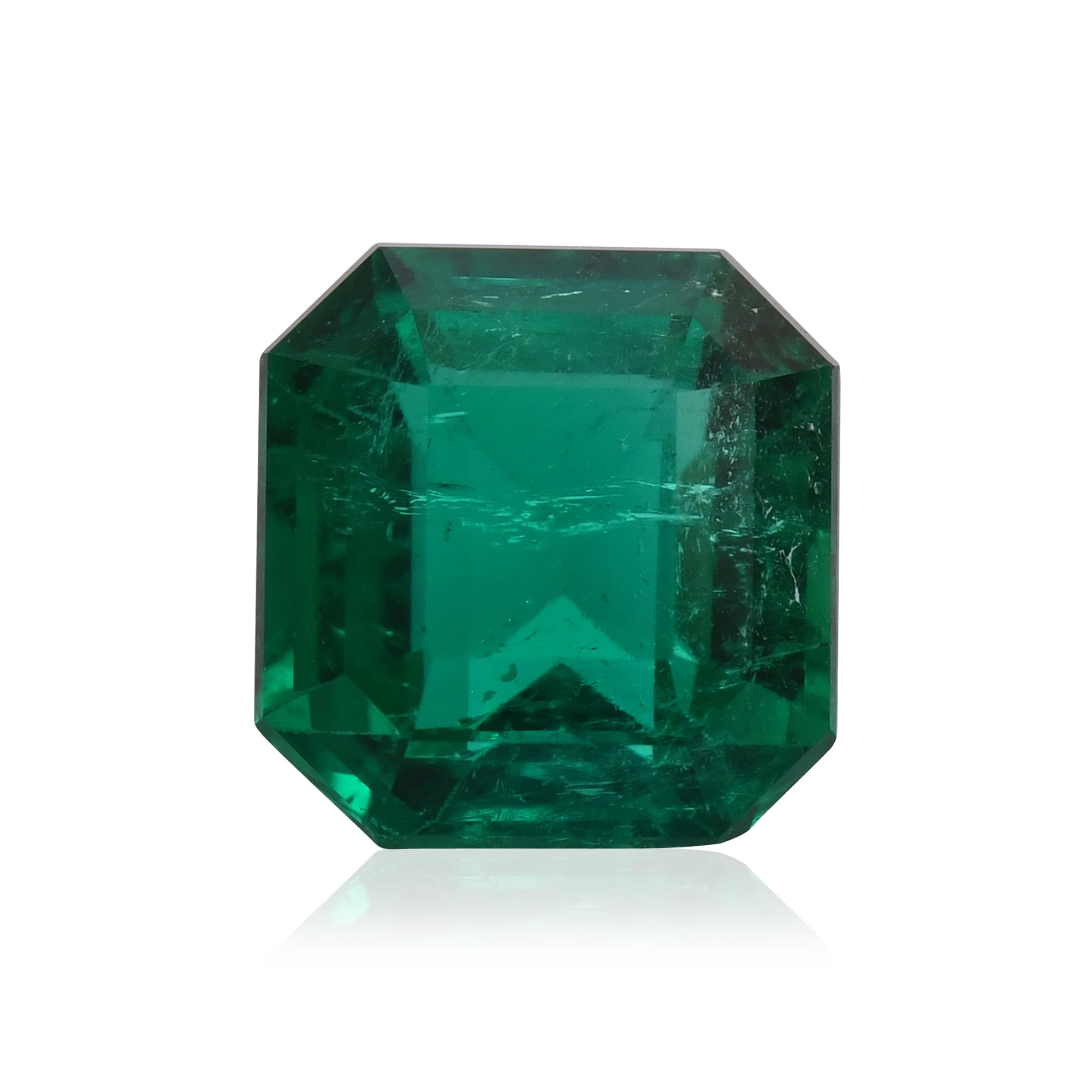Unser wunderbarer Planet hat uns mit vielen faszinierenden Exemplaren beschenkt, auch Edelsteine genannt, die reich an Farbe, Struktur und Glanz sind. Saphir-Edelsteine gehören zu den begehrtesten Edelsteinen, was angesichts ihrer vielfältigen Farbpalette und der endlosen Möglichkeiten, die sie bieten, durchaus verständlich ist.
Einige der Saphirringe von LEIBISH
Was sind Saphire?
Saphire sind einer der vier kostbaren Edelsteine. Die Begriffe Steine und Edelsteine werden häufig verwendet, aber obwohl fast alle Edelsteine aus einem Mineral stammen (abgesehen von seltenen Ausnahmen wie Perlen), ist nicht jeder Stein ein Edelstein, der fast synonym mit dem Begriff kostbar verwendet wird. Dies liegt daran, dass einige als wertvoller gelten als andere und nur einige wenige in die Kategorie der kostbaren Edelsteine fallen.
Um es klarzustellen: Die Unterscheidung zwischen Edelmetallen und Halbedelmetallen wird eigentlich nicht mehr verwendet. Dennoch machen viele zwischen den beiden Gruppen einen Unterschied.
Ein Stein wird zu einem Edelstein, wenn er von seiner rohen Mineralform in ein geschliffenes und poliertes Juwel verwandelt wurde. Die kostbarsten Edelsteine der Welt, Diamanten, Smaragde, Rubine und Saphire, fallen in die Kategorie der sogenannten Edelsteine. Alle anderen Edelsteine werden als Halbedelsteine bezeichnet. Einige sind weit weniger wertvoll als Edelsteine, während andere ein hübsches Sümmchen kosten können.
Saphire sind die Edelsteinvariante des Minerals Korund. Die Variante des roten Saphirs wird Rubin genannt. Saphire werden abgebaut und auch zu dekorativen Zwecken hergestellt. Diese Steine haben eine Härte von 9 auf der Mohs-Skala und sind damit nach Diamanten und Moissanit der dritthärteste Edelstein. Diamanten haben eine Härte von 10, während Moissanit eine Härte von 9,5 hat. Sie werden daher auch für nicht dekorative Zwecke verwendet, beispielsweise für optische Infrarotkomponenten.
Wie entstehen Saphire?
Saphire entstehen im Laufe von Millionen von Jahren unter der Erdoberfläche. Sie sind das Ergebnis mehrerer Prozesse, zu denen hohe Temperaturen und Druck gehören. Dies sind die idealen Bedingungen für metamorphe Prozesse, bei denen Saphire entstehen. Wenn flüssiges Magma tief in der Erde abkühlt, können die Mineralien kristallisieren. Die feinsten und reinsten Formen von Korund, auch als Saphire bekannt, sind genau diese Mineralien, die während dieses Millionen von Jahren dauernden Prozesses rekristallisiert wurden.
Ein Saphir ist ein Mineral, aber kein Diamant, obwohl ein Diamant ebenfalls ein Mineral ist. Es handelt sich um zwei verschiedene Mineralarten. Saphire sind eine Variante des Minerals Korund, das ein Aluminiumoxid ist. Verschiedene Elemente in Saphiren verursachen unterschiedliche Farbtöne. Beispielsweise verursacht Eisen Blau, Titan Gelb und Chrom Violett.
LEIBISH 8,54 ct tiefblauer Saphir
Woher kommen Saphire?
Saphire werden an Orten auf der ganzen Welt abgebaut, stammen aber hauptsächlich aus Kambodscha, Kolumbien, Indien und Kenia. Weitere Gebiete sind Afghanistan, Australien, Nepal, die Vereinigten Staaten und Vietnam. Die Saphire aus den verschiedenen Regionen unterscheiden sich hinsichtlich ihrer chemischen Struktur und ihres Aussehens voneinander.
Saphir-Qualitätsbewertung
Die meisten Menschen wissen, dass ein Diamant anhand von vier Hauptkategorien bewertet wird, besser bekannt als 4Cs, die für Farbe, Reinheit, Schliff und Karatgewicht stehen. Diese dienen der Beurteilung farbiger Edelsteine, wenn auch auf ganz unterschiedliche Weise.
Zunächst einmal werden Farbe, Schliff, Reinheit und Karat bei farblosen Diamanten alle gleich behandelt, bei der Bewertung von Saphiren jedoch nicht. Der Hauptgrund dafür ist, dass die Farbe eines Saphirs absoluten Vorrang vor allem anderen hat. Wir achten nicht auf die Abwesenheit von Farbe wie bei farblosen Diamanten, sondern auf das Vorhandensein von Farbe. Dadurch steht sie im Vordergrund, sodass wir nicht nur darauf achten, welche Farbe es ist, sondern auch, welche Sekundärfarben vorhanden sind, wie intensiv die Farbe sichtbar ist und wie dunkel oder hell der Stein ist. Offiziell haben Farbe, Farbton und Sättigung eines Saphirs Vorrang vor allen anderen Aspekten, einschließlich Reinheit, Karat und Schliff.
Obwohl hochwertige Saphire bevorzugt werden, wird die Qualität nicht auf die gleiche Weise beurteilt wie bei einem Diamanten. Ein Saphir kann Einschlüsse aufweisen und trotzdem als äußerst wertvoll gelten. Es hängt alles davon ab, wo sich der Fehler befindet, wie sichtbar er ist und ob er im Vergleich zur Gesamtfarbe und zum Erscheinungsbild des Steins kaum sichtbar ist.
Obwohl die Farbe eines Saphirs sein wichtigstes Merkmal ist, kommt der Schliff dicht dahinter. Denn die Art und Weise, wie ein Saphir geschliffen wird, beeinflusst seine Farbe direkt. Daher muss die Mitte eines Saphirs so geschliffen sein, dass sie Licht und Farbe reflektiert. Wenn die Mitte des Steins tot ist und weder Licht noch Farbe reflektiert, wird dies als Fenster bezeichnet. Saphire mit großen Fenstern werden zu niedrigeren Preisen verkauft, während Steine ohne Fenster, die volle Farbe und Lichtreflexion aufweisen, einen höheren Wert erzielen.
Saphire gibt es auch in größeren Größen, aber je größer der Stein, desto geringer ist die Wahrscheinlichkeit, dass es sich um einen Qualitätsedelstein handelt. Je größer und hochwertiger der Stein ist, desto seltener und teurer ist er also.
Sind Saphire selten?
Steine, die auf dem Markt als Saphire bekannt sind, sind nicht unglaublich selten, jedoch sind unbehandelte Saphire von hoher Qualität äußerst schwer zu bekommen. Dies liegt daran, dass die meisten abgebauten Saphire von so schlechter Qualität sind, dass sie überhaupt nicht in den Edelsteinhandel gelangen. Unter den Steinen, die es in den Handel schaffen, sind die meisten auf die eine oder andere Weise behandelt. Saphirquellen sind aus mehreren Gründen begrenzt. Wenn die Mine nicht profitabel genug ist, wird sie überhaupt nicht abgebaut. Wenn sich die Quelle außerdem in einem umstrittenen Gebiet befindet, wird sie gemieden und ist somit null und nichtig.
LEIBISH Saphirring mit 3 Steinen
Bedeutung und Geschichte des Saphirs
Saphire wurden vor Tausenden von Jahren entdeckt. Sie reichen bis in den Ersten Tempel im Jahr 957 v. Chr. zurück, da der Saphir einer der zwölf Edelsteine war, die im Brustpanzer des Hohepriesters verwendet wurden. Es ist nicht bekannt, wer als erster Saphire entdeckte.
Heute werden Saphire in Ländern auf der ganzen Welt abgebaut. Einige dieser Länder sind Afghanistan, Kambodscha, Indien, Kolumbien, Nepal, Kenia, Australien, Vietnam, Tansania und die USA. Saphire sind nicht nur eine schöne Ergänzung für jedes Schmuckstück, sondern werden auch zur Herstellung von Fenstern mit hoher Haltbarkeit, Armbanduhrengläsern und Uhrwerklagern verwendet und können auch für die Elektronik verwendet werden.
Saphirpreise
Wie viel kostet ein Saphir?
Ein Saphir kann zwischen 20 und 450 Dollar pro Karat oder Hunderttausende Dollar kosten. Es hängt wirklich von der Qualität des Steins ab, davon, ob er behandelt wurde oder nicht, von seiner Farbe, seinem Schliff, seiner Größe und seiner Form. Ein kleiner, aber hochwertiger Saphir kann das Zehnfache eines viel größeren Steins kosten. Daher muss jeder einzelne Saphir einzeln betrachtet und untersucht werden.
Welcher Saphir ist der teuerste?
Tiefblaue Saphire von hoher Qualität erzielen in der Regel die höchsten Preise, obwohl auch makellose rosa und gelbe Saphire schon ein hübsches Sümmchen einbringen. Unter den teuersten Saphiren, die jemals bei einer Auktion verkauft wurden, gibt es mehrere Steine, die Preise in Millionenhöhe erzielten. Dazu gehören die Richelieu-Saphire, die für 8.358.520 Dollar verkauft wurden, und ein ungefasster burmesischer Saphir, der 7.223.285 Dollar einbrachte.
LEIBISH 16,02 Karat ovales Saphir- und Diamant-Halo-Armband in mehreren Farben aus 18 Karat Gold
Saphirfarben
Bekannt vor allem für ihre blaue Sorte, einschließlich der luxuriösen Königsblauer Saphir , Saphire kommen in einer Reihe von Farben vor, darunter rosa, orange, gelb, grün, violett, farblos und schwarz. Diese Steine sind fabelhafte Alternativen zu ihren teureren Gegenstücken, den farbigen Diamanten, obwohl einige Arten von farbige Saphire kann auch ziemlich teuer sein. Das ist einer der attraktivsten Aspekte eines Saphirs: die vielen Farbauswahlmöglichkeiten.
Farbwechselnde Saphire
Neben den verschiedenfarbigen Saphiren gibt es mehrere einzigartige Saphirarten, die sich von den anderen abheben. Eine dieser Arten ist der farbwechselnde Saphir. Wie sein Name schon sagt, zeigt dieser ungewöhnliche Saphir unterschiedliche Farben, wenn er natürlichem und künstlichem Licht ausgesetzt wird.
Welcher Saphir ist der beste, blau oder gelb?
Das Wort Saphir und die Farbe Blau gehen im Grunde Hand in Hand, daher kann man mit Sicherheit sagen, dass blaue Saphire zu den beliebtesten Saphirarten gehören. Allerdings sind gelbe Saphire sehr beliebt geworden, vor allem, weil sie eine günstigere Alternative zu den schönen, aber teuren gelben Diamanten sind.
Verschiedene Arten von Saphiren
Echte, ungeheizte Saphire sind am gefragtesten und kommen wie Diamanten in der Natur vor. Synthetische Saphire, die im Labor hergestellt werden, gibt es aufgrund der Seltenheit und des hohen Preises echter Saphire. Natürliche oder eher ungeheizte Saphire gibt es in mehreren Farben, wobei Blau die bekannteste und beliebteste Farbe ist. Andere Farben sind Gelb, Lila, Orange, Rosa, Braun und Grün. Es gibt auch farblose Saphire, die aufgrund ihrer Ähnlichkeit anstelle von Diamanten verwendet werden können. Es gibt auch Saphire, die eine Farbkombination aufweisen.
Was ist ein Sternsaphir?
Eine weitere besondere Saphirart ist der Sternsaphir. Aufgrund der Unvollkommenheiten im Stein kann der Saphir einen Asterismus aufweisen, der einem Stern ähnelt, daher der Name. Sternsaphire sind aufgrund dieser einzigartigen Eigenschaft eine Kategorie für sich. Solche Saphire sind unglaublich selten und sehr begehrt. Es gibt auch Sternrubine.
LEIBISH Blauer Saphir
Saphir Rubin
Ist ein Rubin ein Saphir?
Die einfache Antwort auf diese Frage lautet nein. Obwohl Rubine die rote Form von Korund sind, während Saphir die blaue Form und Padparadscha die rosa-orange Form ist, sind sie unter unterschiedlichen Namen bekannt.
Es muss unbedingt darauf hingewiesen werden, dass Saphire und Rubine genau dieselbe wissenschaftliche Struktur aufweisen. Das bedeutet, dass Saphir und Rubin tatsächlich dieselbe Art von Stein sind. Der einzige wesentliche Unterschied besteht darin, dass Rubine eine exquisite rote Farbe haben. Die einzigartige Farbe des Rubins reichte aus, um ihn als eigenen Edelstein zu definieren, aber abgesehen von dem Element, das die rote Farbe verursacht, haben die beiden Steine dieselbe Edelsteinstruktur. Nur Rubine mit einer starken roten Farbe gelten als Rubine, während die helleren Steine als rosa Saphire bekannt sind.
Saphir-Geburtsstein
Der klassische Saphir-Geburtsstein ist blau, aber der Geburtsstein bezieht sich auf alle Saphire, sodass man aus einer Reihe verführerischer Saphirfarben wählen kann. Jemand mit einem Saphir-Geburtsstein kann sich entscheiden, einen blauen, grünen, gelben, braunen oder rosa Saphir zu tragen. Das ist einer der attraktivsten Aspekte eines Saphirs: die vielen Farbauswahlmöglichkeiten.
Saphire in Gelbgold gefasst
Die unglaubliche Schönheit eines Saphirs lässt sich nicht leugnen, egal ob er blau, gelb oder farblos ist. Dieses äußerst haltbare Material ist in einer Vielzahl atemberaubender Farben erhältlich und ist ein unwiderstehliches Juwel, das sich perfekt für jedes Stück oder jeden Anlass eignet.
Wie bei allem im Leben muss man Kompromisse eingehen, und wie bei allem anderen sprechen verschiedene Dinge verschiedene Menschen an. Wenn Sie also nicht unbedingt den größten, hochwertigsten Saphir mit der schönsten Farbe haben und ihn sich auch leisten können, sollten Sie sorgfältig überlegen, was Ihnen am wichtigsten ist. Ist es die Größe? Die Farbe? Die Form? Die Qualität? Je größer ein Stein ist, desto größer ist die Wahrscheinlichkeit, dass er Einschlüsse hat. Andererseits haben kleinere Steine wahrscheinlich weniger Fehler. Wenn Sie also das Beste aus beiden Welten wollen, müssen Sie bereit sein, den Preis zu zahlen.
Weitere Fragen können den Steinkaufprozess, die Gebote und Verbote sowie das, worauf zu achten ist, betreffen. Stellen Sie immer sicher, dass Sie bei einem seriösen Unternehmen kaufen, und versuchen Sie, eine sachkundige Person als Unterstützung mitzunehmen.






















































































































